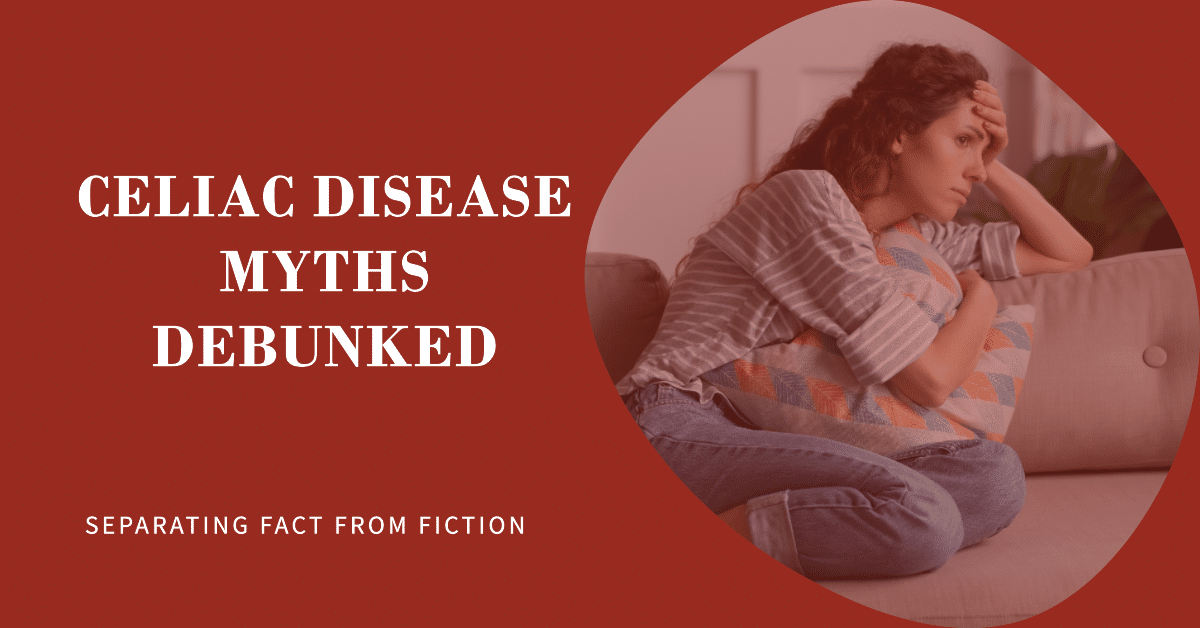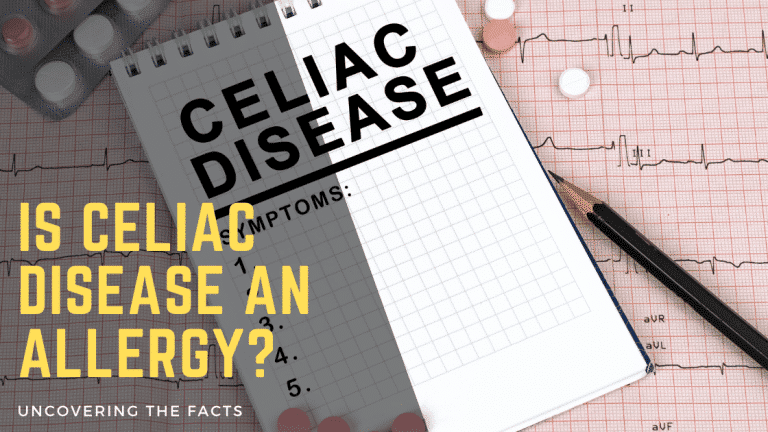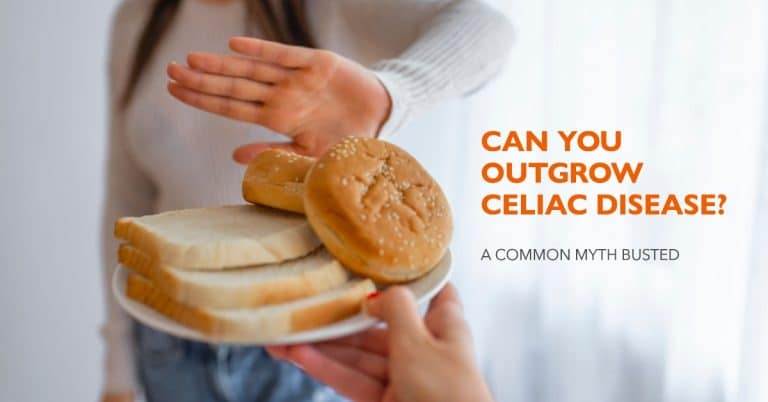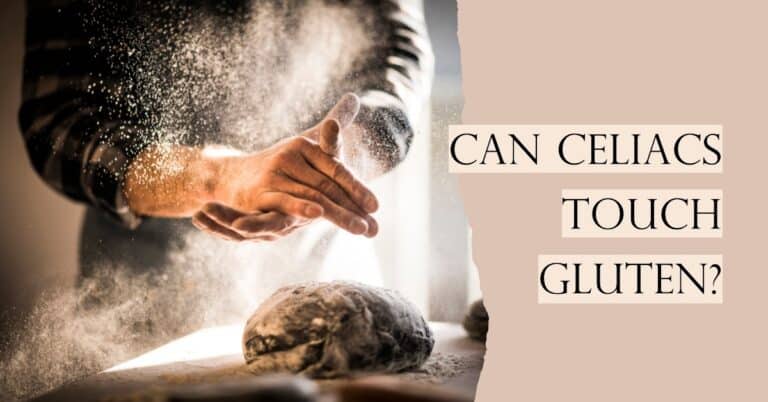Fact vs Fiction: 11 Celiac Disease Myths You Must Stop Believing Now

The moment I was diagnosed with celiac disease in 2021 meant that after years of suffering, I finally had a label for my pain.
But although it’s been a while since my diagnosis, I still come across a heap of myths and misinformation even today.
From the crazy suggestion that ‘heat destroys gluten’ to ‘surely only a little bit of gluten couldn’t hurt?’, I’ve heard it all before (and then some).
Now, it’s time to set the record straight and put a few celiac disease myths to bed. Let’s get into this!
Key Facts About Celiac Disease
- Celiac disease affects approximately one in 100 people globally [1].
- Consuming gluten harms more than just the gut in celiac patients.
- Diagnosis requires more than just a blood test; a biopsy is essential.
- Gluten-free isn’t synonymous with health—some gluten-free foods lack nutrients.
- The only known management for celiac disease is a strict gluten-free diet.
Myth 1: Celiac Disease is a Rare Condition
Think celiac disease is uncommon? Think again. Globally, it’s estimated that one in every 100 individuals grapples with this condition.
For me, understanding that I wasn’t battling this alone provided solace. There’s a comforting sense of community among those who face similar challenges.
Myth 2: Celiac Disease Equals Food Allergy
Mixing up celiac disease with a mere food allergy is a common misconception. In reality, it’s an autoimmune disease.
When those of us with celiac disease eat gluten, our immune system wages war on our small intestine.
If you’re looking to dig deeper into the differences between allergies and autoimmune disorders, check out my comprehensive guide on celiac as an autoimmune condition.
Myth 3: A Blood Test is All You Need for Diagnosis
It’s a prevalent belief that a blood test can confirm celiac disease. But there’s more to the story. Yes, blood tests are crucial—they can hint at the disease.
Yet, it’s the biopsy of the small intestine that really seals the diagnosis – in my case, it took two upper GI endoscopies, a flexible sigmoidoscopy, and a colonoscopy to finally get diagnosed with celiac disease and IBS!
In my own journey, I learned how crucial it was to get a complete evaluation, especially when symptoms of celiac disease can be so hidden.
Myth 4: Gluten-Free Diets Are A ‘Fad’
Adopting a gluten free diet is not just a fashionable choice; for individuals with celiac disease, it’s a lifesaver.
Unfortunately, this vital treatment approach has been overshadowed by the trend of opting for gluten-free foods as a health fad.
Personally, I’ve found that a gluten-free diet helps me manage both my celiac disease and IBS, reducing stomach troubles significantly.
Yet, not everyone needs to avoid gluten. And in some cases, gluten-free foods may lack essential nutrients. You can find out more in my guide to the dangers of a gluten-free diet if not celiac.
Myth 5: Celiac Disease Only Affects the Digestive System
Celiac disease is notorious for the havoc it wreaks on the digestive system, but its impact goes beyond that.
In fact, it can manifest through various symptoms that you wouldn’t even have thought could be linked to celiac disease.
Other body systems can be affected by celiac disease too, including the skin, presenting as dermatitis herpetiformis, or even affecting the nervous system.
I learned how to identify the less-known flu-like symptoms of celiac disease to manage my condition better.
Myth 6: Small Amounts of Gluten are Harmless
When I initially started my gluten-free journey, I thought that tiny traces of gluten couldn’t do much harm.
However, I learned the hard way that even small amounts could lead to significant flare-ups.
Research stipulates that consuming gluten, even in minute quantities, can provoke adverse reactions in individuals with celiac disease.
Anything over the recommended 10-50mg maximum gluten intake per day and celiacs could let themselves in for a whole world of trouble.
Discovering the tolerance levels of gluten for people with celiac disease helped me fine-tune my diet and avoid unnecessary pain.
Myth 7: You Can “Grow Out” of Celiac Disease
Sadly, this isn’t a condition that you can outgrow; celiac disease is a lifelong companion – it demands a continuous commitment to a gluten-free diet.
Many mistakenly believe that children with celiac disease can safely reintroduce gluten into their diets as they grow.
I remember reading stories about individuals who thought they “overcame” the disease, only to suffer later on.
For reliable information on managing celiac in the long term, you can turn to resources like this personal narrative on recognizing celiac disease.
Myth 8: “May Contain Gluten” Means It’s Safe for Those with Celiac Disease
While some might believe that “may contain” warnings are just legal precautions, it’s crucial for someone with celiac disease to treat them seriously.
The phrase “may contain gluten” indicates potential cross-contamination during production, which is a genuine concern.
I’ve often debated whether to eat something with a “may contain” warning, but after understanding the risks, I decided it wasn’t worth the gamble.
Learn more in my guide to understanding ‘may contain gluten’ warnings on product labels.
Myth 9: Gluten Sensitivity and Celiac Disease are the Same
Many people mistake non-celiac gluten sensitivity for celiac disease.
Although symptoms might appear similar, non-celiac gluten sensitivity doesn’t cause the same kind of damage to the small intestine.
I’ve explained this distinction to friends and family more times than I can count!
Learning about the nuances between celiac disease and gluten sensitivity will help you understand how each condition differs.
Myth 10: You Can be “Cured” of Celiac Disease
Sadly, the belief that there’s a cure for celiac disease is just a myth. The truth is, celiac disease is a lifelong condition with no known cure.
The only way to manage it is through a strict gluten-free diet, which prevents severe health complications.
Trust me, sticking to this diet is non-negotiable. Read more on my personal experiences with this realization in this detailed account.
Myth 11: Heat Destroys Gluten
Does heat destroy gluten? – it’s a common question that celiacs are tired of hearing. But here’s the thing – no, heat absolutely DOES NOT neutralize gluten!
No amount of cooking can make gluten-containing foods safe for individuals with celiac disease.
The same goes for gluten-free foods cooked in the same oil as gluten-containing food items!
If you’re eating out and a staff member tries telling you the opposite is true, I’d highly recommend you walk right out and choose somewhere else to dine. It’s better to be safe than sorry!
Celiac Disease Myths: Final Thoughts
With a deeper understanding of these myths, individuals like us can navigate a gluten-free life with more confidence.
Remember, each person’s experience with celiac disease may vary, and it’s crucial to keep learning and adapting.
Let’s face this challenge head-on, armed with knowledge and resilience, making our lives happier and healthier.
Disclaimer: This content is based on my personal experience as an individual diagnosed with celiac disease and IBS (Irritable Bowel Syndrome) who follows a strict gluten-free diet. This does not constitute medical advice. Please consult a medical professional, nutritionist, or qualified dietitian for personalized, professional advice.





